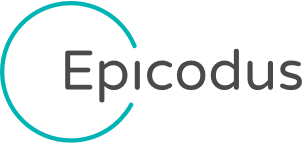If you're a prospective student considering attending Epicodus, you might be wondering why we don't claim 99% placement rates like some other schools. We believe that such claims don't give you the information you need to make an informed decision, because such schools are manipulating their numbers to increase their placement percentage. Here's how they are doing it:
- They remove students who don't meet their qualifications of "job-seeking" by participating in employment services. While this may seem reasonable, in reality, very often the students who feel least-prepared by their schools are most likely not to participate in these programs.
- They remove students did not respond during their data collecting process. Although this happens, removing these students means these schools can inflate their numbers by not following up with students whom they think might not have done well in their job search.
- They use a broad definition of "job" to increase the number of students they can report as employed. For example, they lump part-time or contract positions in with full-time numbers. While there's nothing wrong with non-permanent positions as they are often a stepping stone, it's misleading not to break out these numbers.
- They don't have a time limit on their data collection. So if a student finds a job two years after graduating, they're included in the same percentage as a student who finds a job within a month.
Some of these schools claim to be "transparent" because they disclose these practices in fine print on long PDF documents you can download from their websites, and sometimes even because an auditor reviewed their data for accuracy. But as a prospective student, these numbers don't actually tell you what kind of success you can expect from enrolling in their school. You shouldn't take those percentages at face value.
Last year, Epicodus helped found the Council on Integrity in Results Reporting (CIRR). CIRR is a standard developed by a large group of coding schools who believe in giving prospective students the information they need to make informed decisions. In contrast to the practices described above, CIRR members like Epicodus follow these higher standards:
- We report on every student who enrolls, even those who don't graduate.
- We don't remove any students from our calculations. We even disclose the percent of graduates we couldn't contact.
- We differentiate among different types of jobs, including full-time, internship, and part-time.
- We report outcomes at 90 and 180 days after graduation.
As a potential student, you can trust that our numbers won't mislead you as you decide if attending is the right choice for you.












